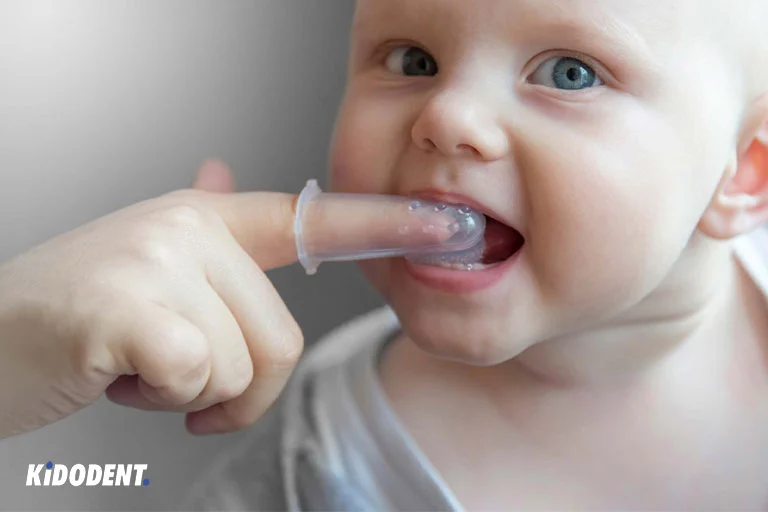Teething can be uncomfortable for some infants and toddlers. It is a normal child’s stage where parents can ease the painful experience with much care and attention. For this reason, in our article, we have prepared a complete view of the baby’s teething stage, signs, how to manage the pain, and some caring tips. If you have a baby waiting for its first teeth, you need to read this.
Teething: when do the first baby teeth come out?
Though babies’ teeth begin to shape early in their mother’s womb, they should reach six months of age for the first tooth to come out. This may vary from one baby to another. Earlier than six months or later is also one such difference.
Once teeth begin to grow and come out, there are some signs that appear, which we will explain in the following list.
What are the signs that babies’ teeth coming out?
The most important signs of growing teeth are:
- Crying
- Fussiness
- Being responsive
- Biting
- Pulling their ears or cheeks
- Not willing to be fed
- Constantly waking up, especially during the night
- Coughing
- Drooling
- Itchy gums
Not every baby may experience these signs and some babies may not have a specific symptom. But they are the most common teething behaviors.

When do babies start teething?
Teething starts two or three months earlier than babies’ first milk teeth. These signs show that teeth are beginning to grow because babies feel itchy in their gums. Teeth are pushing the gums to come out. Unless the teeth come out completely, these signs seem to appear regularly. The pain can grow bigger when infants reach six months of age.
Eight tips to ease your baby’s teething pain
Naturally, every infant experience the pain of a growing tooth and that doesn’t mean we shouldn’t be thinking of a way to relieve the pain. We should be prepared how to take care of our babies during their initial challenge. Below, there are eight helpful tips to relieve the pain of teething that are worth trying.
Get your baby to be busy chewing
The more they chew, the less they feel the pain. Infants are born with this mechanism to decrease their pain. Get your babies a pacifier or soft teething toys to chew on. Make sure those toys are large enough to prevent that from getting into their throat.
Teething toys, or teethers, are a safe way to help soothe your baby’s gums. Come in different designs, and other interesting features, teethers offer a gentle massage for the inflamed baby’s gums.
Put those toys into the fridge Not the freezer and Not for a long time. Low-temperature toys can lessen their pain.
Do something yourself
Most of the time mothers can do a great favor. Wash your hands and let your baby chew on your fingers. Give their gums a soft massage or use a soft small toothbrush.
Give them a cool drink
Cool drinks help relieve the pain of teething in your toddler or baby’s gums. Get them to drink water or something cool in a controlled way if the baby is old enough to drink that (definitely over six months).
Don’t forget cold food
Here we mean foods that we put into the fridge. Let that be cool enough for babies to eat. Yogurt can be a great example. Grated apples that are fresh and just out of the fridge are good, too. These are healthy pain reliever options.
Visit a pediatric dentist
When the above tips can’t help to treat the pain, and you see your baby is very uncomfortable, especially on frequent occasions and even after their initial teeth, try to see a pediatric dentist or a general dental practitioner.
Pay more attention to your baby
Help them forget the pain. Try to make them busy and play with them. Provide toys and feed your babies well. Be kind and kiss your baby.
Never use dental anesthetics!
Never use herbal or chemical anesthetics for making babies’ gums numb. These anesthetics must not be used for children under two years old.
Using anesthetics (whether herbal or chemical) can cause a shortage of oxygen, leading to cardiovascular diseases.
Never use alcohol in order to relieve the pain of growing teeth.
Get rid of pacifier necklaces
Instead of using normal pacifiers or soft toys, some people may use pacifier necklaces which are a great danger for babies and may strangle them. Try to avoid that for your babies.
Five tips that all parents should know about how to take care of baby teeth
Now that you know how to relieve the pain of teething, there are some more things you need to know in order to improve your child’s dental care.
1-The first thing is knowing the time for baby teeth
The first baby tooth usually appears around 6 months old, and lower front teeth (central incisors) are the first ones to come. By age 3, most children will already have all of their baby teeth.
2-Babies get fluoride from their diet
Fluoride is a mineral substance great for making the enamel of teeth strong and preventing tooth decay. In most countries, fluoride is added to the drinking water so that every individual gets the benefits. It can be found in foods and beverages processed with fluoridated water, and baby formula prepared with water—powder or liquid concentrate.
Be sure that your water source is safe and has recommended level for your baby. Don’t forget your pediatric dentist’s opinion.
3-After teething, brush the child’s teeth
Parents should take care of their infant and toddler’s teeth. Brush your child’s teeth with water only if they are younger than 2 years of age and use fluoride toothpaste if they are older than 2. For children, the amount of fluoride toothpaste is different from that of adults. Use a much smaller amount—a grain of rice—from 2 to age 3.
Upon reaching three years of age, they can use a little more fluoride toothpaste, a pea-sized amount.
The most important tip to know is that parents should supervise their children’s toothbrushing. When children are seven or eight, they can brush their teeth by themselves and they should keep on doing that twice a day.
4-Having the first signs of growing a tooth, take your baby to a pediatric dentist
It is recommended that parents take their babies to a pediatric dentist within the appearance of the first tooth or no later than the child’s first birthday. During the dental checkups, the pediatric dentist checks the baby’s health, examines the normal teeth growth, and teaches parents necessary instructions about teeth hygiene and caring tips about mouth and teeth.
5-Ask for advice about fluoride varnish
Fluoride varnish is a dental treatment that can prevent tooth decay. Ask your pediatric dentist whether it is safe for your children considering their age or not. Ask them when the best time for fluoride varnish is.
